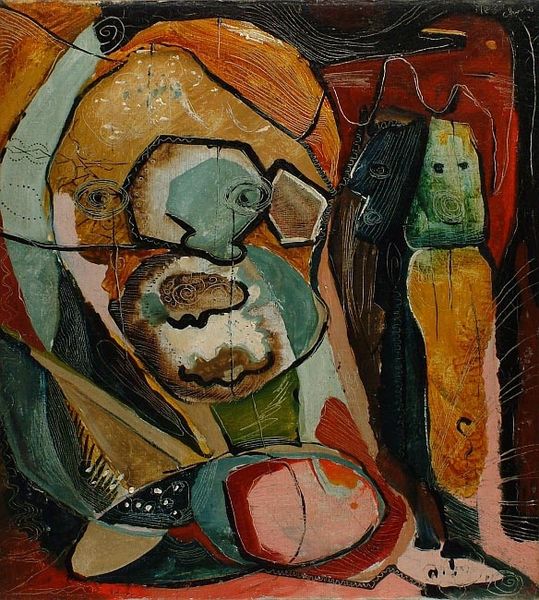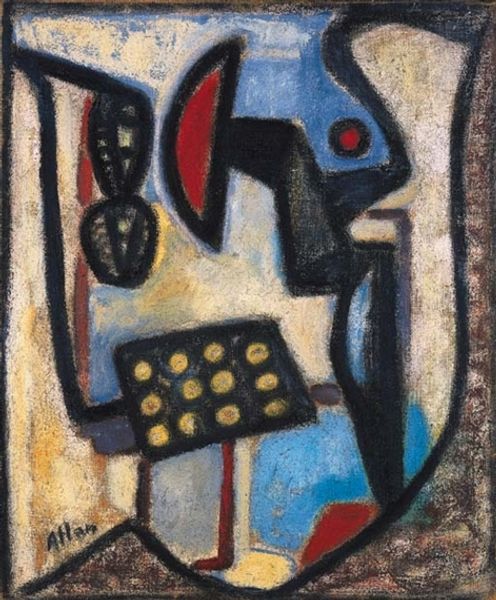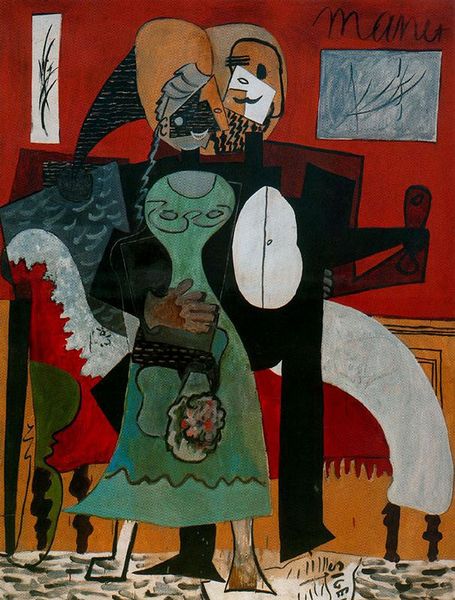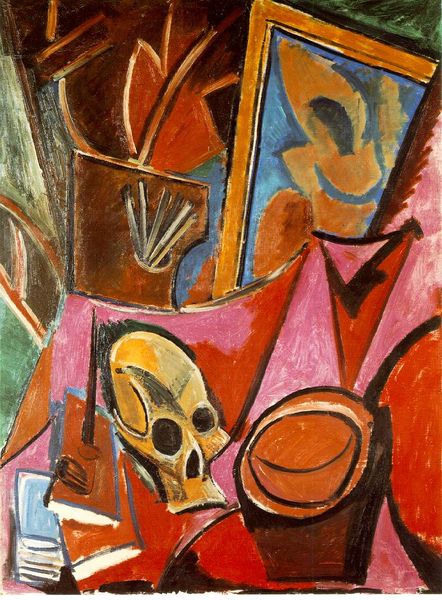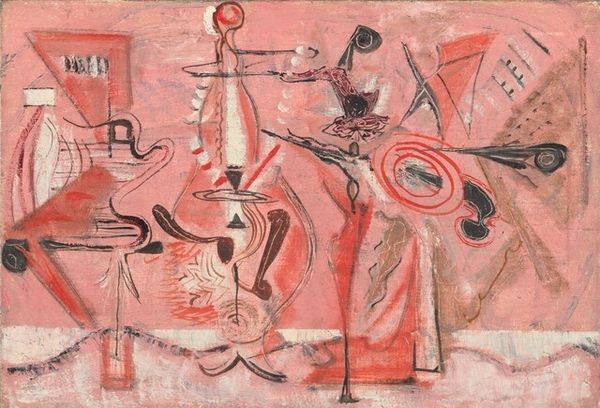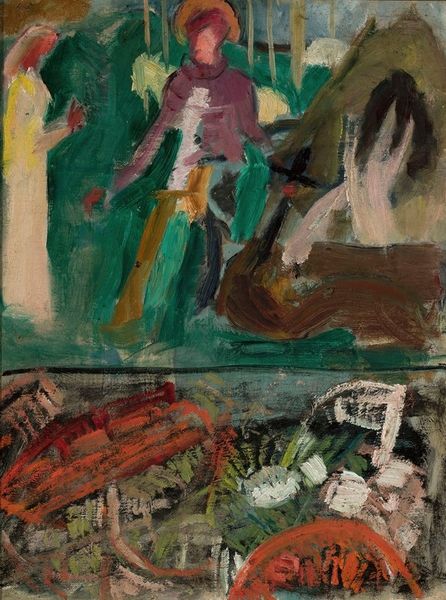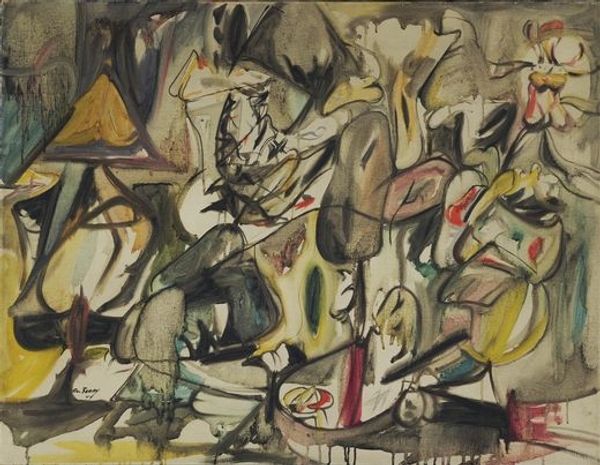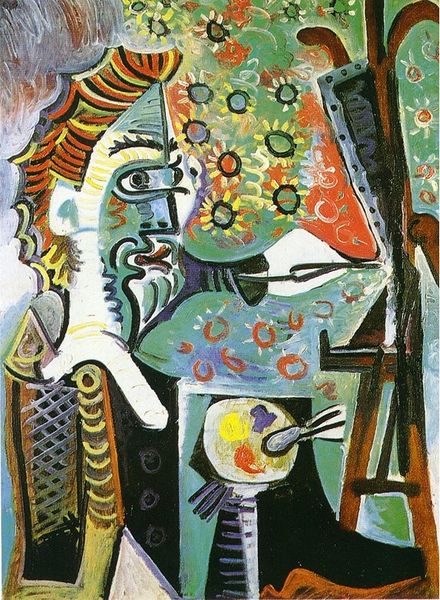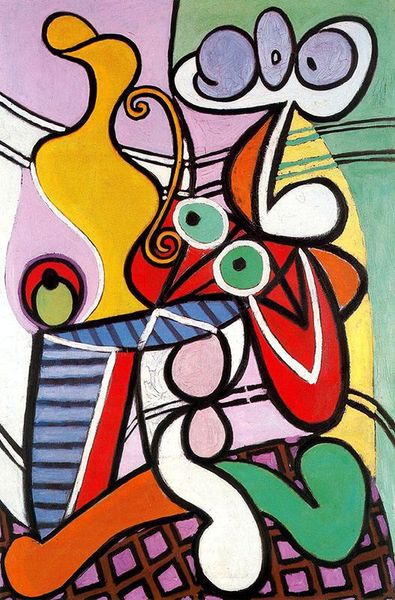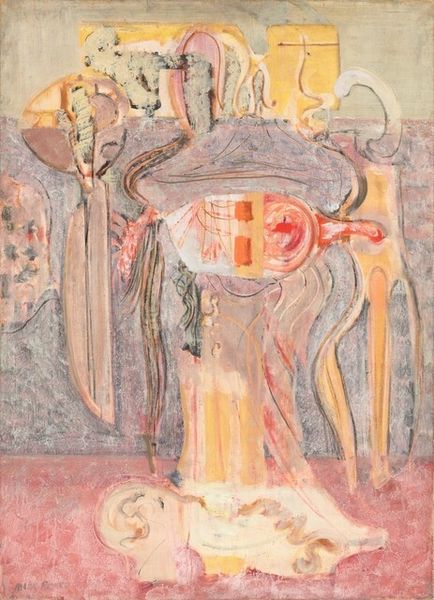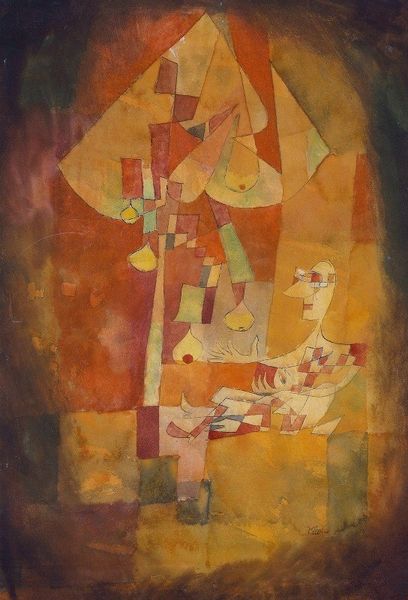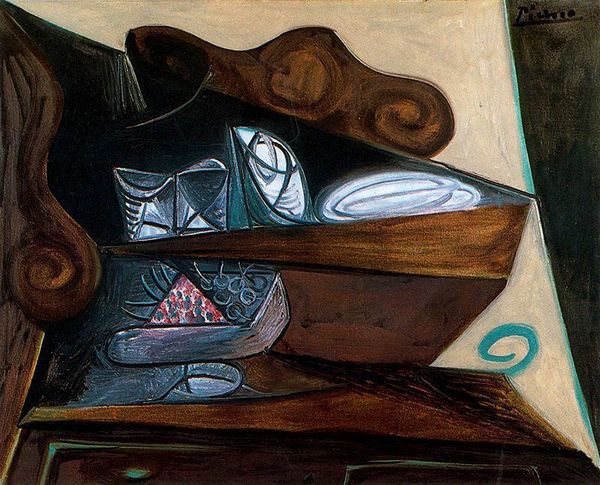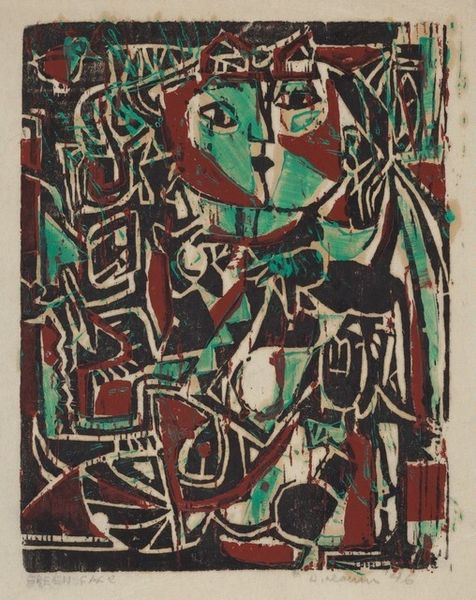
Dimensions: overall: 100 x 69.8 cm (39 3/8 x 27 1/2 in.) framed: 109.4 x 79.2 x 6.7 cm (43 1/16 x 31 3/16 x 2 5/8 in.)
Copyright: National Gallery of Art: CC0 1.0
Curator: Here we have an Untitled piece by Mark Rothko, executed in 1943 with oil paint. It marks an earlier phase of his career, predating his signature color field paintings. Editor: My first impression is...unease. There's a strange mechanical, almost anatomical quality. A palette dominated by grey, green, and a blood-like red creates a somber and slightly disturbing mood. Curator: Indeed, it’s quite a departure from his later works. The composition is complex, full of layered geometric and organic forms. We can see traces of Surrealism, too. Look at these eye-like shapes, almost like disembodied observers. The recurring symbolism may allude to his anxieties of the period, and possibly, a reflection on personal crisis and sociopolitical upheaval. Editor: Exactly. Given that this was created during the Second World War, it is tempting to interpret this as a response to the political realities of war. These ambiguous forms suggest both destruction and construction. It feels like he is hinting at a fragmented world desperately seeking wholeness. But are those skeleton-like arms a reference to fascism? Curator: Perhaps. We know Rothko was deeply affected by the war. This abstract imagery serves as a vessel to convey the weight and trauma he experienced. But one must also consider his personal history. The forms almost resemble symbolic totems, each carrying ancestral meaning or an unconscious longing for cultural continuity after leaving Latvia. Editor: The painting's ambiguity serves a crucial function. Rather than illustrating specifics, it delves into the deeper currents of trauma, inviting a broader reflection on war and displacement beyond national borders. This reminds me of theorists exploring the “crisis of representation” that gripped many artists during the time of such atrocities, like Adorno and Horkheimer. Curator: I agree. This piece serves as an anchor of that struggle between symbolic forms, each echoing personal and universal history. What feels heavy in Rothko's painting carries historical relevance. Editor: Precisely. This early piece helps to situate Rothko’s better-known work as less about detached formalism, and more about human beings making sense of senseless times. Curator: Definitely. It gives you a fresh appreciation for the layers beneath those later washes of color, doesn't it? Editor: Absolutely. Thanks for bringing these symbolic interpretations to the surface, this will surely encourage other activists to speak about their readings on Abstract Expressionism!
Comments
No comments
Be the first to comment and join the conversation on the ultimate creative platform.
